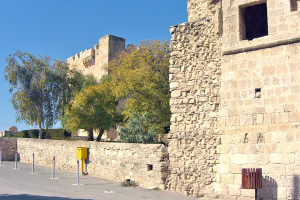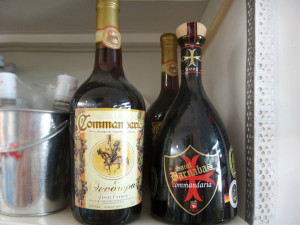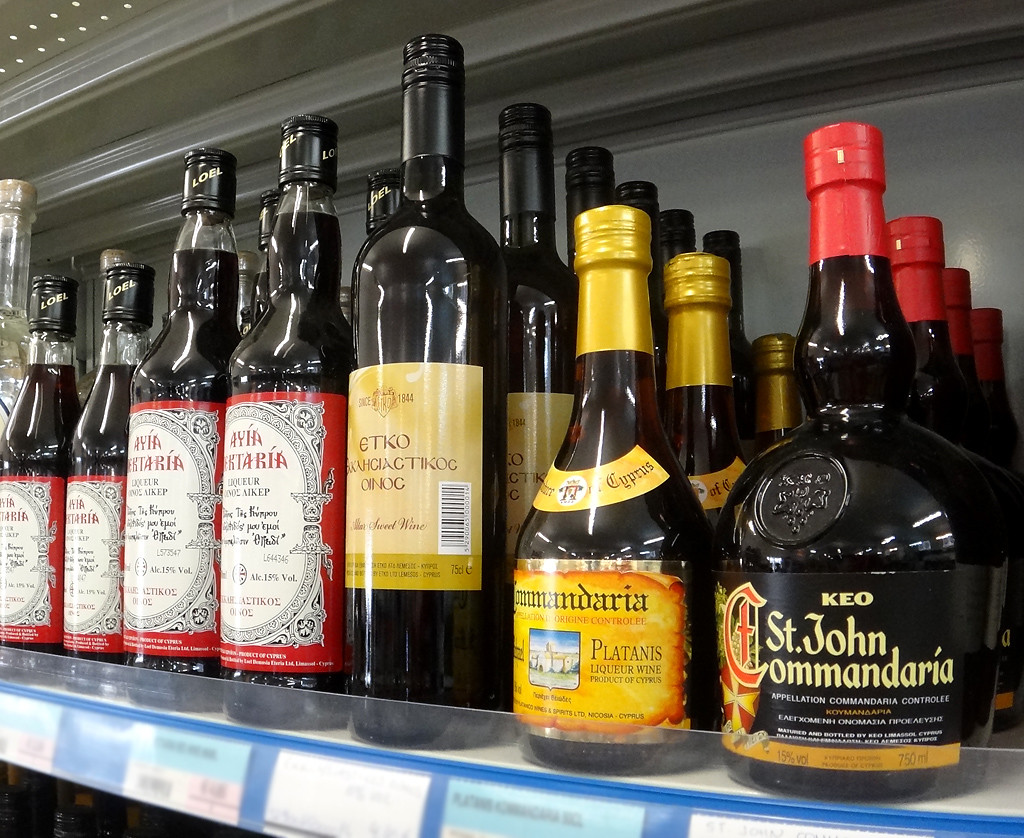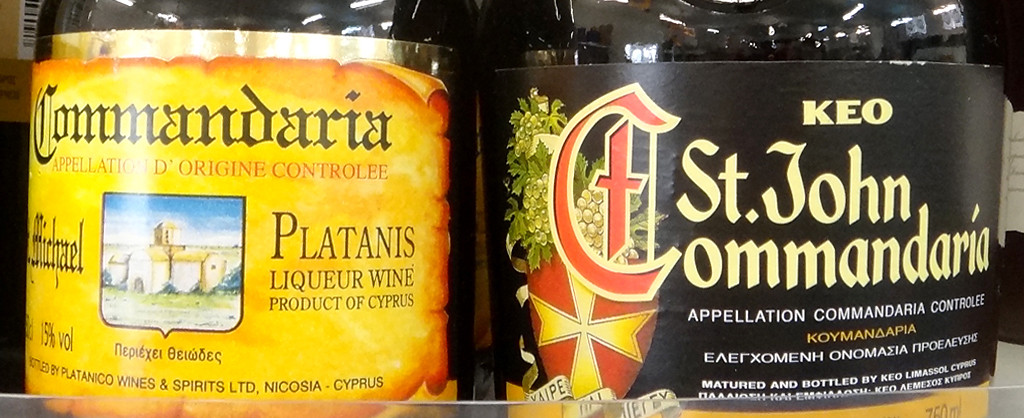Today we want to talk about the wine that’s not only the oldest, but is still considered one of the best in the world. It is a legend on the island and also throughout the entire world of wine.
History of the name Commandaria

In order to take control, the knights divided the island into districts (commanderies). The largest of these, in the district of Limassol, is called La Grande Commandaries, with the main Templar settlement being in the famous Kolossi Castle.
Another two smaller Commandaria were Phoenix in Paphos and Templos in Kyrenia. The region known as Grande Commandaria produced the ancient wine which later became known as Vindela Commanderie, or Commandaries, and this name, associated with the rule of the Templars, has survived to the present day.
Worldwide

It should be noted that historian, Ludolf Von Zuhen, who visited the island between 1336 and 1341, wrote that the production of Commandaria was the basis for the financial prosperity and well being during the years 1192 and 1489.
In 1791 Giovanni Maritie, in his work ‘Voyages dan l’is lede Chypre, la Syrieetla Plaestine, avec I ‘histoire generale du Levant’, noted that the Venetians were the main exporters of Commandaria from Cyprus.
The quality of the wine was so spectacular that the poet Genrid Angels, in the famous work of 1213, wrote the following: “In a time of great tasting, at the competition between the world’s best wines, that was hosted by the King of France, Philip Augustus, the sweet wine of Cyprus has been called “an apostle of wines”, which shines like a star.”
Many countries have subsequently tried to learn the technology, and have planted grapes in an attempt to produce the same unique wine. The Portuguese were the most successful when the grapes were planted on the island of Madeira, which later produced the world famous sweet wine of the same name.
During the reign of the Ottomans Commandaria production decreased dramatically, and some vineyards were abandoned due to the exorbitant taxes levied on wine-makers: 20% for the cultivation of grapes, 10% for the wine itself, and 8% for export.
In search of treasure
The Commandaria Region is located on the southern slopes of the Troodos Mountains, at an altitude of 400-800 metres above sea level.
Since 1990 the name has been protected by law, and now only 14 villages can produce the wine which will be officially recognized as Commandaria:

- Agios Konstantinos,
- Agios Mamas,
- Agios Pavlos,
- Apchu,
- Gerasa,
- Doros,
- Zoopigi,
- Kalo Chorio,
- Kalileyo,
- Lania,
- Luvaras,
- Monagri,
- Silicou.
Commandaria is made from the local grape varieties Xynisteri and Mavro. Wine can be blended (of these two grape varieties), or varietal (only Mavro or only Xynisteri).
The vineyards in the region have a very low yield due to the type of soil, but precisely because of this the local grape has a distinctive aroma and flavour.
Initially it was believed that a high percentage of Xynisteri grapes combined with Mavro produced high quality Commandaria. However, recently it’s been discovered that the addition of a certain amount of Mavro elevates the taste of the wine to perfection, improving its flavour and saturating the colour.
Production process
These sun-dried grapes are stored for a long time in oak barrels, which help with its flavours of rich honey, spices, dried fruit and nuts.
By the end of the winter the sweet wine is transported to huge cellars in the large wineries in Limassol, and then begins the process of maturing and refining. According to tradition (and law), the wine should be stored in oak barrels for at least 2 years before being bottled. However, it will be at least 5-6 years before the wine acquires the desired taste.
The final maturation, and the last before the release of Commandaria onto the wine market, is under the control of the committee of expert winemakers.
Before serving, Commandaria should be chilled to a temperature of 8-10 C degrees in order to best disclose its flavours and aroma. Commandaria is usually served as a dessert wine.
Commandaria is best served in tulip glasses to perfectly reveal its flavour. The basic rule for dessert wines is that the dessert should not be sweeter than the wine, and the same applies to Commandaria. This aristocratic and complex beverage requires the same noble desserts. In other words very sweet desserts, such as baklava, are not suitable.
Commandaria is traditionally served in Cyprus with dried fruit, sweet grape juice (sudzhukos), nuts and almonds in caramel.
Conclusion
Our acquaintance with the history and tradition of Commandaria, as well as the current methods of its production, has come to an end. However, it’s worth remembering that it’s better to try once than read a hundred articles about it! So try Commandaria, enjoy it, and remember that you are tasting a truly royal wine.
